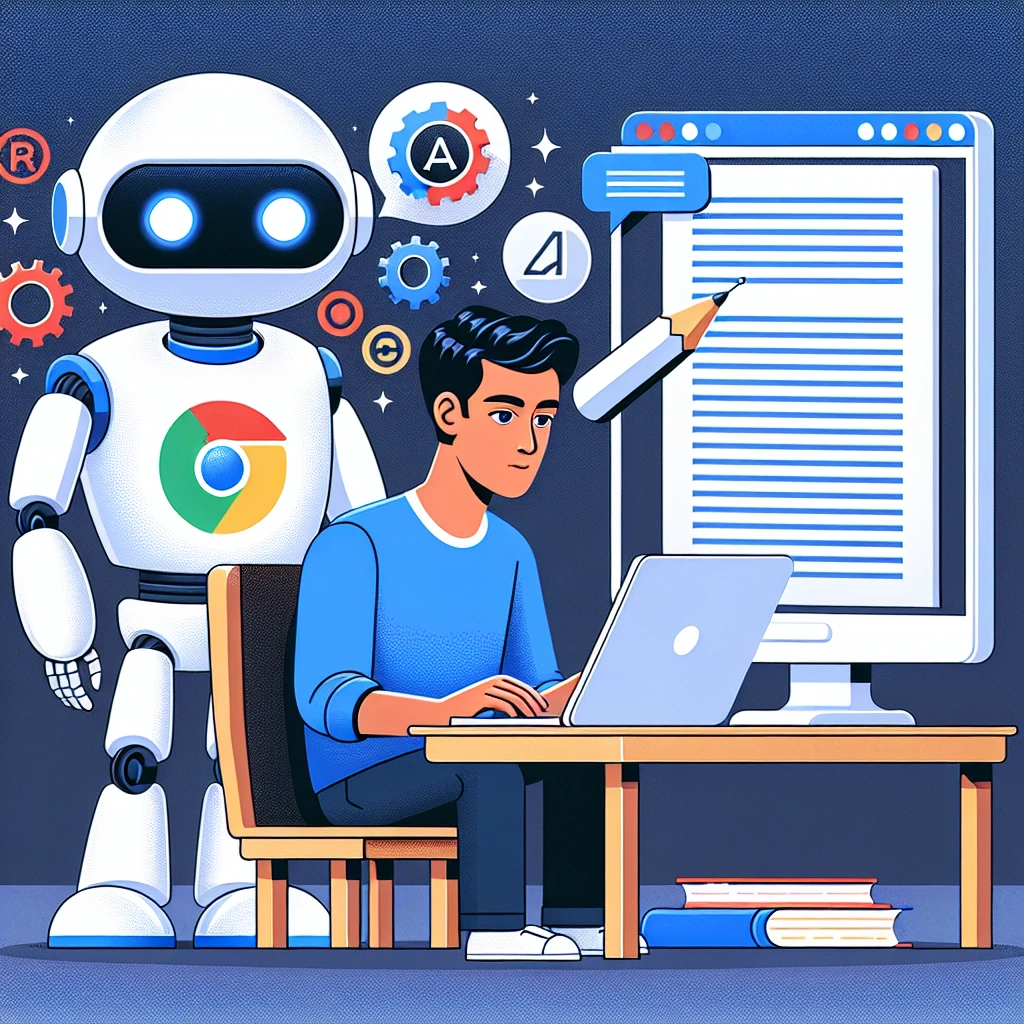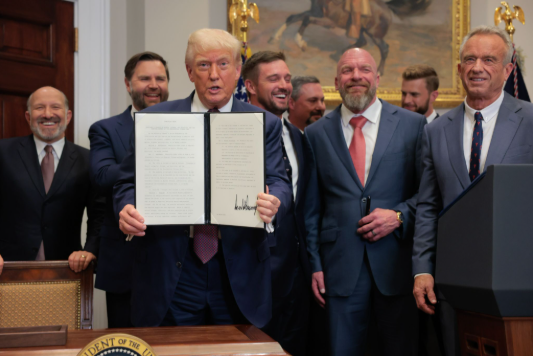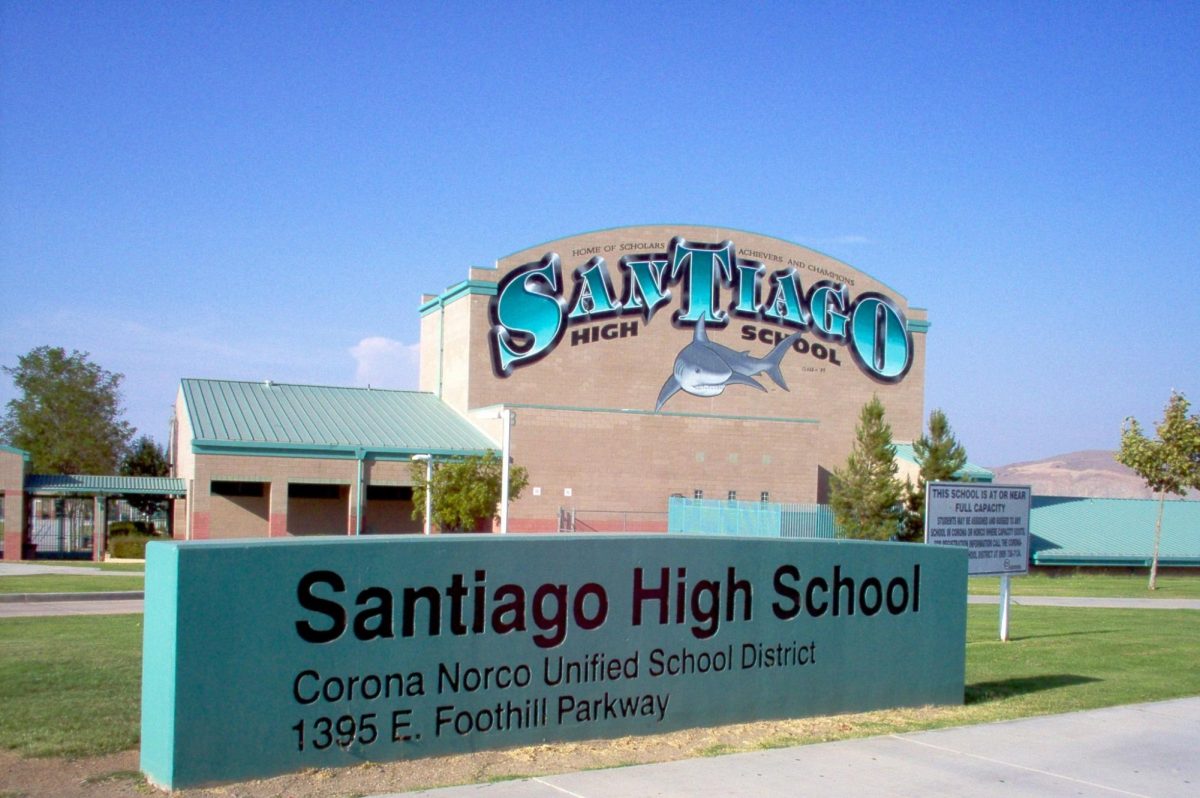Turn to the student next to you and ask them if they have ever used AI — the answer is probably yes. Now, follow up with them by asking if they’ve ever used generative AI for schoolwork. Sixty-three percent of teachers have reported their students utilizing AI in dishonest manners, and thanks to Turnitin, more students are getting caught plagiarizing their work. This epidemic has become prevalent in Santiago High School, and teachers have decided to take action by implementing a new plagiarism/AI policy.

Brooke Wheeler, an honors and AP language arts teacher at Santiago and one of the leading advocates for this policy, asserts, “As a group, we shared the huge issue that plagiarism has become in our classes. We found plagiarism to be widespread with the use of AI. It occurred to us that students perhaps didn’t necessarily know what was acceptable and considered plagiarism and what was not. So we needed clarification for students, and as a group, we needed to be aligned in the consequences when plagiarism occurred”, concluding that “Students need to know that this is a serious offense with serious consequences.”
About this Policy
Tackling the problem of academic dishonesty through plagiarism is a difficult task; however, teachers have formed a plausible solution. Many students may recall that at the beginning of the year, they and their parents were asked to read and sign a form titled Plagiarism and Academic Dishonesty Policy, which set the rules, procedures, and repercussions for plagiarism offenses. Through an interview, Mrs. Wheeler touches on these procedures by describing the consequence of a student’s first detection of plagiarism, “The policy involves one warning resulting in a zero on the assignment and a parent notification. We want to talk to the flagged student to ensure they fully understand that their actions are unacceptable.” She then elaborates on the consequence of a second notice, “After that, the student will receive a referral and be required to serve a Saturday school in which they will have to complete a module educating them about plagiarism and AI. In addition, if the student is in an honors or AP class, a level change will be recommended.”
This educational module was created by Laura Larson, a journalism and AP literature teacher at Santiago High School. Through an interview, she goes into the specifics of this course, “There are three modules in the course; the first module is on identifying and explaining plagiarism, where students learn about the different types of plagiarism, the basics of citations, and MLA. The second module is the most critical, in my opinion, focusing on the ethical and unethical use of AI, which we have been encountering the most recently. Most of the students who have gotten into trouble for plagiarism are from the use of various generative AI, such as ChatGPT, to help them.” She proceeds to discuss the last module and the length of the course, “The third module is building integrity, where we ask students to write their own integrity plan. The course is about two to three hours and will be completed during the Saturday school.” This plagiarism and academic honesty course is considered critical for students, and Mrs. Larson discusses the need for teachers to integrate the knowledge from this course into their classrooms. “It is not supposed to be a punishment; it is supposed to be educational,” she concludes.
The Acceptable and Unacceptable Uses of AI Overview
Although the course covers unethical and ethical uses of AI, here are three examples:
Example 1- If a student is drafting or outlining a paper, an acceptable use of AI would be to seek guidance on the best practices for structuring a research paper, essay, or report. An unacceptable use of AI would be to have AI generate an outline or draft of a paper using AI-generated writing in the final draft.
Example 2- If a student is creating citations or bibliography, seeking guidance on how to cite, checking citations, generating a draft of the bibliography listing, or checking the format of a student-made draft is acceptable. On the other hand, having AI generate citations without the student reading the sources and checking for accuracy is unacceptable.
Example 3- If a student is summarizing or interpreting sources, using AI to help understand vocabulary or confusing ideas is acceptable. However, AI-generated summaries into final drafts and asking AI to find direct quotes from a source is unacceptable.
If a student is confused and/or wondering about the ethical and unethical uses of AI, they are encouraged to ask their teachers to avoid the chances of unwanted plagiarism, as there have been many cases where students were unaware of their unethical use of AI.

The Disconnect
As mentioned above, there have been many cases where students have unintentionally plagiarized, and we could argue weren’t even responsible. In the Case of Marley Stevens, her use of the Grammarly generative AI- checker to proofread her paper was flagged for plagiarism. This is a lesson learned for many students who use Grammarly to take caution when allowing their AI-checker to proofread and provide corrections to work. A predicament much like this one also occurred in our own school’s AP Research course, so students should avoid unintentional plagiarism at all costs by making themselves aware of the different forms of plagiarism. However, with this information, we can not just assume that every form of plagiarism is unintentional.
Why do students intentionally plagiarize?
Although cheating is never acceptable, we must look at the underlying issues that sway students in the direction of academic dishonesty in the first place. There are various reasons a student may plagiarize, yet the most prominent reasons are that students are afraid of failure, are lazy, busy, uninterested, confused, or believe that they will not get caught or face consequences. However, from first-person observation as a student in rigorous courses, academic dishonesty takes place amongst those most academically involved, and this has a lot to do with the heightened competitive environment surrounding education. The school has become less of a learning environment for some and more of a battleground amongst peers, creating an unhealthy obsession with competing for the highest GPA or the most qualifications to get into a prestigious university. This fight for earning a spot in a top university has magnified as colleges have become ever more selective due to the rising applications, holistic admissions processes (consideration of factors beyond GPA and test scores), and the omission of SAT/ACT requirements. In other words, achievement culture has become toxic.
Jennifer Breheny Wallace’s book, Never Enough: Where Achievement Culture Becomes Toxic and What We Can Do About It, addresses the causes and consequences of this culture, as well as the approach one should take when encountering this issue. She touches on the various factors that drive toxic achievement culture, such as societal and parental expectations, social media, and the educational system. The issue is that many students find their meaning and self-worth through their external achievements, and they place themselves into a cycle where they are compelled to achieve more because what they’ve done will never be enough. Students must learn that they matter, or they are only damaging their own well-being, which should be their top priority. In the context of plagiarism, many students who allow external achievements to define them often cannot find their talent and worth within their own work, driving them towards academic dishonesty in hopes that pre-written or AI-generated writing will impress a teacher more than their own work.
Wallace suggests that there are ways to combat this toxic achievement culture, intrinsically and externally. She advocates for one to redefine success, set attainable goals, build resilience, prioritize physical and mental health, avoid unhealthy comparisons, and, most of all, create healthy environments free of toxic pressures.
Here are some quotes from her book:
“Mattering has many layers. It begins with mattering to our parents and then extends outward to our community and the wider world. The more we feel valued, the more likely we are to add value, and the other way around—a virtuous cycle of interdependence that can continuously feed our sense of mattering, notes the community psychologist Isaac Prilleltensky. Mattering is what he describes as a “meta need,” or an umbrella term that captures feelings of “being valued,” such as belonging, community, and attachment, as well as feelings around “adding value,” such as self-determination, mastery, and competence. Put them all together, he says, and you experience mattering.”
“Kids do not need parents who take self-sacrifice to the extreme. They need parents who have some perspective on the fraught high-achievement culture they find themselves in. Our kids need parents who have the wisdom and energy to call out the unhealthy values of achievement culture for the threats they are. And kids need to hear consistent countercultural messaging: about their inherent worth, about the delight they give their parents, about their meaning and purpose as a part of a larger world.”
Thus, schools and parents should focus on helping students find their inner worth, emphasizing values and well-being through daily conversations. Education is about the attainment of knowledge in all areas, and a piece of knowledge that should not be excluded is that they matter.
Maybe then, along with the new policy set in place, will academic dishonesty and plagiarism be reduced. Now, let us weigh the effectiveness of the new Plagiarism and Academic Dishonesty policy.
Effectiveness of the Policy
An “ intervention program” or an educational course on plagiarism has actually been proven to be highly effective. A group of researchers published in Frontiers in Education conducted a systematic review of the effectiveness of intervention programs, much like this one, and found that implementing these programs does in fact reduce plagiarism. However, as it is our first year implementing this policy, its effectiveness will reveal itself in time.
Conclusion
Overall, plagiarism through AI has become a significant issue, and teachers are trying to combat it through effective policies and educational programs. School districts should consider requiring 9th graders to take this course at the beginning of the school year to educate students on what constitutes plagiarism. Teachers want to see students’ own thoughts and writing because they matter, so students should not be swayed toward academic dishonesty. Thus, implementing this plagiarism policy is necessary, and its effectiveness will be revealed in time.









Mehak Asim • Sep 16, 2024 at 9:12 pm
I totally agree that plagiarism prevents one from expressing their thoughts and beliefs in their writing. Well done on the report!